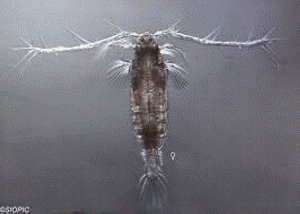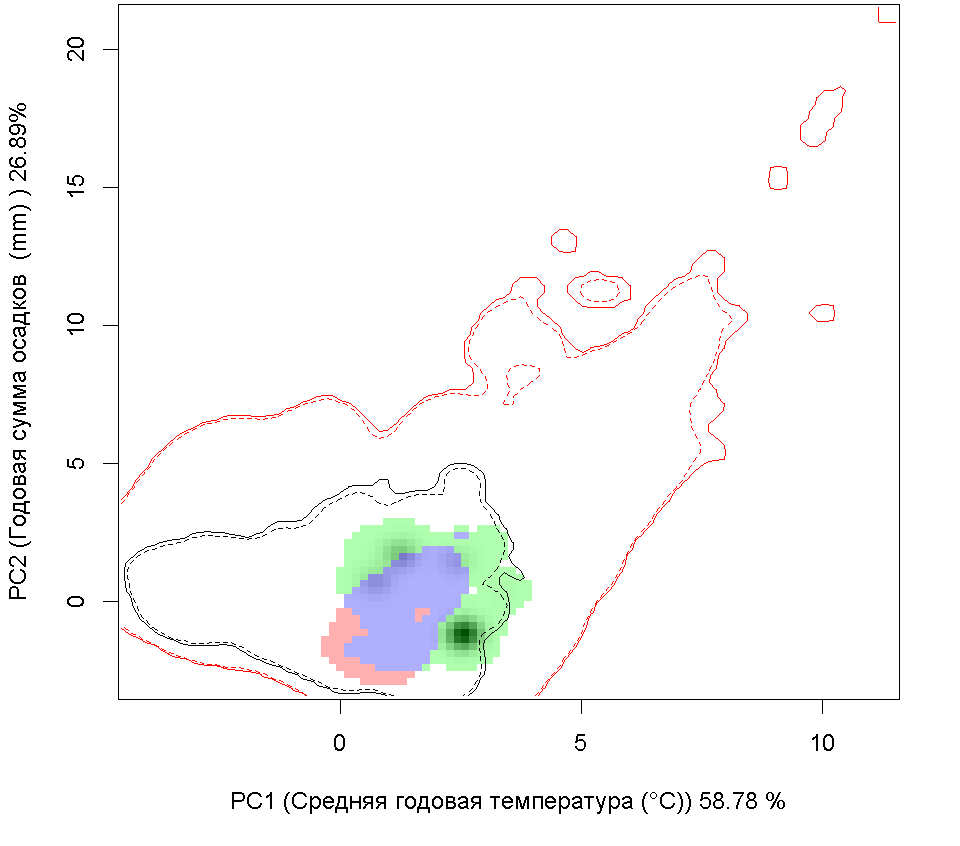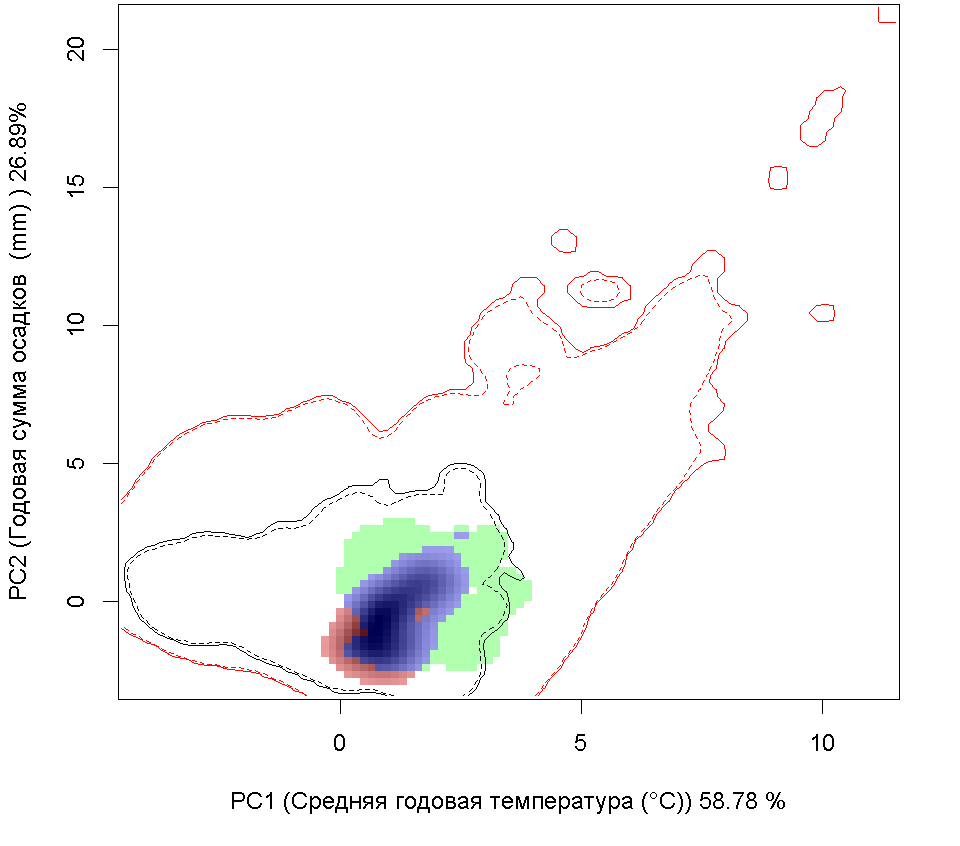 |
| |
Acartia tonsa, Dana, 1849
Акарция |
Систематическое положение (Kingdom, Phylum, Class, Order, Family, Species):
Animalia, Arthropoda, Maxillopoda, Calanoida, Acartiidae, Acartia tonsa

Акарция - Acartia tonsa
Русское и английское названия. Акарция, английское название отсутствует
Синонимы. Acartia (Acanthacartia) tonsa; Acartia giesbrechti Dahl, 1894; Acartia bermudensis Esterly, 1911; Acartia floridana Davis, 1948; Acartia gracilis Herrick, 1887; Acartia tonsa cryophylla Bjornberg, 1963.
Нативный ареал. Acartia tonsa распространена во всем мире в водах как субтропического, так и умеренного климата. Предполагается, что этот вид является реликтом ледникового периода с северо-востока Северной Америки (McAlice, 1981). Регион донор - Атлантические прибрежные воды и эстуарии Северной Америки. Acartia tonsa впервые была обнаружена на восточном побережье Северной Америки в 1900 году, где она был найдена в солоноватой воде.
Современный ареал (мировой и конкретнее в России).
Солоноватоводная копепода (веслоногие ракообразные), широко распространенная у Атлантического берега Южной и особенно Северной Америки. В европейских водах впервые обнаружена в планктонных материалах из Зюдерзее в Голландии, собранных в 1914—1916 гг. В 1927 г. она обнаружена у атлантического берега Франции и в настоящее время является весьма обычной в солоноватых и, реже, пресных водах почти всей Западной Европы. В Балтике расселение этого вида, судя по первым находкам, было также очень быстрым: в 1925 г. она была обнаружена в Данцигской бухте, в 1926 г.— в Рижском заливе, в 1934 г — в Лужской губе Финского залива. Таким образом, этот вселенец в течение первых 40 лет распространился на пространстве от южных берегов Финляндии, Дании до Франции и Англии. В 1925 году он был найден в заливе Гданьск, Польша. В Германии впервые был обнаружен в устье реки Везер в 1930 году (Redeke, 1934). Acartia tonsa является наиболее солоноватоводным видом данного рода, нередко встречаясь в совершенно пресной воде. Появилась в Азовском, Черном (Прибрежье Крыма, южная часть Черного моря, Прикерченский район), Балтийском морях, Северное море, Каспийское море, Средиземное море. В настоящее время встречается в Атлантике, Индийском и Тихом океанах.

Инвазионная часть ареала акарции ( Acartia tonsa) в Евразии
Места находок: 1 – по GBIF (Acartia tonsa GBIF.org (12 July 2018) GBIF Occurrence Download https://doi.org/10.15468/dl.g920iz); 2 – по литературным и собственным данным (см. текст).
© Проект РНФ, № 16-14-10323 (Рук. В.Г. Петросян), ИПЭЭ РАН Пути(коридоры) и векторы (способы) интродукции.
Распространение с балластными водами (Gubanova, 2000).
Местообитание.
Acartia tonsa живет в прибрежных водах и эстуариях. Это эвритермный, эвригалинный вид, способный переносить большие колебания трофических условий.
Особенности биологии.
Acartia tonsa - раздельнополые животные. Размножение половое. Спариванию предшествует сложное половое поведение, в котором, видимо, обычно играют важную роль как хеморецепция, так и механорецепция. Самки копепод выделяют половые феромоны, которые воспринимаются самцами при помощи хемосенсорных щетинок (эстетасков) первых антенн. Крупные, сравнимые по размерам с размерами брюшка животного, сперматофоры самцов переносятся на генитальный сегмент самки во время спаривания при помощи левой пятой ноги самца; на её конце имеются «щипчики», удерживающие бутылковидный сперматофор за суженную базальную часть. Яйца Acartia tonsa сбрасываются в воду. Вылупляемые из яиц науплии проходят 6 стадий развития до перехода на копеподитную стадию и потом еще 6 копеподитных стадий, чтобы достичь половой зрелости. Когда условия среды неблагоприятные, например, когда температура воды опускается ниже порогового уровня, откладываются покоящиеся яйца, которые накапливаются на дне в отложениях и вылупляются при улучшении условий среды. Питаются ракообразные в основном фитопланктоном, но иногда потребляют простейших, коловраток, свои собственные яйца и науплии.
Влияние вида (на другие виды, экосистемы включая лесную и агроценозы, здоровье человека).
Конкуренция с другими видами. Есть свидетельства о вытеснении локальных видов ракообразных при интродукции Acartia tonsa. Этот вид вытеснил A. bifilosaна юге-востоке Франции (David et al., 2007). В Испании A. tonsa отрицательно воздействовала на A. clausi (Aravena et al., 2009). Положительно для этого вида то, что они используется в качестве корма в аквакультурах (Marcus & Wilcox, 2007; Sorensen et al., 2007).
|
Графическое представление перекрывания ниш нативной и инвазионной частей ареалов, а также при сценариях изменения климата
|
|
Текущий климат
|
|
Нативная часть
|
Инвазионная часть
|
|
 A A
|
 B B
|
| Графическое представление перекрывания ниш нативной (A) и инвазионной (B) частей ареалов вида, где сиреневый цвет – зона стабильности, розовый цвет – зона расширения, зеленый цвет – зона «неиспользования». Сплошные и пунктирные линии показывают 100% и 90% области доступной среды в нативной (черные линии) и инвазионной (красные линии) частях ареалов, которые использовались для анализа перекрывания ниш. |
|
Сценарии изменения климата
|
|
RCP26
|
RCP45
|
|
 C C
|
 D D
|
|
RCP60
|
RCP85
|
|
 E E
|
 F F
|
| Графическое представление перекрывания ниш в условиях текущего климата и при сценариях его изменения - (C) RCP26; (D) RCP45; (E) RCP60; (F) RCP85. |
Литература
- Николаев И.И., 1951.О новых вселенцах в фауне и флоре северного моря и Балтики из отдаленных районов Латвийское отделение ВНИРО, Рига. Зоологический журнал, т. 30, вып. 6.
- Смирнов С.С., 1935. О появлении Acartia tonsaDana (Copepoda) в Финском заливе. Доклады Академии На ук СССР 1935, Том III (VIII), № 5 (65)
- AndersenBorg, M. 2009. Non-indigenous zooplankton – the role of predatory cladocerans and of copepods in trophic dynamics. Ph.D. thesis, University of Stockholm, Sweden, 53pp.
- Aravena, G., Villate, F., Uriarte, I., Iriarte, A. and Ibanez, B. 2009. Response of Acartia populations to environmental variability and effects of invasive congenerics in the estuary of Bilbao, Bay of Biscay. Estuarine, Coastal and Shelf Science 83: 621-628.
- Belmonte, G. 1998. The egg morphology of 7 Acartiidae species: a preliminary survey of the ootaxonomy of calanoids. Journal of Marine Systems 15: 35-39.
- Belmonte, G., Mazzocchi, M.G., Prusova, I.Y. and Shadrin, N.V. 1994. Acartia tonsa: a species new for the Black Sea fauna. In: Ecology and Morphology of Copepods (F.D. Ferrari and B.P. Bradley, eds.). Hydrobiologia 292/293: 9-15.
- Berggreen, U., Hansen, B. and Kiorboe, T. 1988. Food size spectra, ingestion and growth of the copepod Acartia tonsa during development: implications for determination of copepod production. Marine Biology 99: 341-352.
- Bielmyer, G.K., Grosell, M. and Brix, K.V. 2006. Toxicity of silver, zinc, copper, and nickel to the copepod Acartia tonsa exposed via a phytoplankton diet. Enviromental Science and Technology 40(6): 2063-2068.
- Calliari, D., Andersen, C.M., Thor, P., Gorokhova, E. and Tiselius, P. 2006. Salinity modulates the energy balance and reproductive success of co-occurring copepods Acartia tonsa and A. clausi in different ways. Marine Ecology Progress Series 312: 177-188.
- Calliari, D., Andersen Borg, M.C., Thor, P., Gorokhova, E. and Tiselius, P. 2008. Instantaneous salinity reductions affect the survival and feeding rates of the co-occurring copepods Acartia tonsa Dana and A. clausi Giesbrecht differently. Journal of Experimental Marine Biology and Ecology 362: 18-25.
- Caudill, C.C. and Bucklin, A. 2004. Molecular phylogeography and evolutionary history of the estuarine copepod, Acartia tonsa, on the Northwest Atlantic coast. Hydrobiologia 511: 91-102.
- Cervetto, G., Pagano, M. and Gaudy, R. 1995. Feeding behavior and migrations in a natural population of the copepod Acartia tonsa. Hydrobiologia 300/301: 237-248.
- Chen, G. and Hare, M.P. 2008. Cryptic ecological diversification of a planktonic estuarine copepod, Acartia tonsa. Molecular Ecology 17: 1451-1468.
- Cubbage, A., Lawrence, D., Tomasky, G. and Valiela, I. 1999. Relationship of reproductive output in Acartia tonsa, chlorophyll concentration, and land-derived nitrogen loads in estuaries of Waquoit Bay, Massachusetts. Biological Bulletin 197: 294-295.
- David, V., Sautour, B. and Chardy, P. 2007. Successful colonization of the calanoid copepod Acartia tonsa in the oligomesohaline area of the Gironde estuary (SW France) – Natural or anthropogenic forcing? Estuarine, Coastal and Shelf Science 71: 429-442.
- Engstrom, J., Koski, M., Viitasalo, M., Reinikainen, M., Repka, S. and Sivonen, K. 2000. Feeding interactions of the copepods Eurytemora affinis and Acartia bifilosa with the cyanobacteria Nodularia sp. Journal of Plankton Research 22(7): 1403-1409.
- Frammande Arter 2006. Acartia tonsa fact-sheet. Available as pdf (accessed on 10 August 2009). Garmew, T.G., Hammond, S., Mercantini, A., Morgan, J., Neunert, C. and Fornshell, J.A. 1994. Morphological variability of geographically distinct populations of the estuarine copepod Acartia tonsa. In: Ecology and Morphology of Copepods (F.D. Ferrari and B.P. Bradley, eds.). Hydrobiologia 292/293: 149-156.
- Gifford, D.J. and Dagg, M.J. 1988. Feeding of the estuarine copepod Acartia tonsa Dana: Carnivory vs. Herbivory in natural microplankton assemblages. Bulletin of Marine Science 43(3): 458-468.
- Gollasch, S. and Nehring, S. 2006. National checklist for aquatic alien species in Germany. Aquatic Invasions 1(4): 245-269.
- Gonzalez, J.G. 1974. Critical thermal maxima and upper lethal temperatures for the calanoid copepods Acartia tonsa and A. clausi. Marine Biology 27(3): 219-223.
- Gubanova, A. 2000. Occurrence of Acartia tonsa Dana in the Black Sea. Was it introduced from the Mediterranean? Mediterranean Marine Science 1(1): 105-109.
- Hammer, R.M. 1978. Scanning electron microscope study of the spermatophore of Acartia tonsa (Copepoda: Calanoida). Transactions of the American Microscopical Society 97(3): 386-389.
- Hojgaard, J.K., Jepsen, P.M. and Hansen, B.W. 2008. Salinity-induced quiescence in eggs of the calanoid copepod Acartia tonsa (Dana): a simple method for egg storage. Aquaculture Research 39(8): 828-836.
- Holmstrup, M., Overgaard, J., Sorensen, T.F., Drillet, G., Hansen, B.W., Ramlov, H. and Engell-Sorensen, K. 2006. Influence of storage conditions on viability of quiescent copepod eggs (Acartia tonsa Dana): effects of temperature, salinity and anoxia. Aquaculture Research 37(6): 625-631.
- Holste, L. and Peck, M.A. 2006. The effects of temperature and salinity on egg production and hatching success of Baltic Acartia tonsa (Copepoda: Calanoida): a laboratory investigation. Marine Biology 148(5): 1061-1070.
- Hubareva, E., Svetlichny, L., Kideys, A. and Isinibilir, M. 2008. Fate of the Black Sea Acartia clausi and Acartia tonsa (Copepoda) penetrating into the Marmara Sea through the Bosphorus. Estuarine, Coastal and Shelf Science 76(1): 131-140. Jespersen, P. 1933.
- Planktonfaunaen i Ringkobing Fjord og Nymindestrommen 1914-30. [The plankton fauna in Ringkobing Fjord and the Nyminde Inlet.] In: R. Sparck (ed.) 1933-1936. Ringkobing Fjords Naturhistorie i Brakvandsperioden 1915-31, pp. 49-61. [in Danish with English summary]
- Katajisto, T. 2006. Benthic resting eggs in the life cycles of calanoid copepods in the northern Baltic Sea. Walter and Andree de Nottbeck Foundation Scientific Reports No. 29, Helsinki, Finland, 46pp. Available as pdf (accessed 26 February 2010).
- Katajisto, T., Viitasalo, M. and Koski, M. 1998. Seasonal occurrence and hatching of calanoid eggs in sediments of the northern Baltic Sea. Marine Ecology Progress Series 163: 133-143.
- Kiorboe, T. and Bagoien, E. 2005. Motility patterns and mate encounter rates in planktonic copepods. Limnology and Oceanography 50(6): 1999-2007.
- Kiorboe, T., Mohlenberg, F. and Hamburger, K. 1985. Bioenergetics of the planktonic copepod Acartia tonsa: relation between feeding, egg production and respiration, and composition of specific dynamic action. Marine Ecology Progress Series 26: 85-97.
- Kusk, K.O. and Petersen, S. 1997. Acute and chronic toxicity of tributyltin and linear alkylbenzene sulfonate to the marine copepod Acartia tonsa. Environmental Toxicology and Chemistry 16(8): 1629-1633.
- Leandro, S.M., Tiselius, P. and Queiroga, H. 2006. Growth and development of nauplii and copepodites of the estuarine copepod Acartia tonsa from southern Europe (Ria de Aveiro, Portugal) under saturating food conditions. Marine Biology 150: 121-129.
- Lee, W.Y. and McAlice, B.J. 1979. Seasonal succession and breeding cycles of three species of Acartia (Copepoda: Calanoida) in a Maine estuary. Estuaries 2(4): 228-235
- Marcus, N.H. and Wilcox, J.A. 2007. A guide to the meso-scale production of the copepod Acartia tonsa. Florida Sea Grant. Available as pdf (accessed on 25 February 2010).
- McAlice, B.J. 1981. On the post-glacial history of Acartia tonsa (Copepoda: Calanoida) in the Gulf of Maine and the Gulf of St. Lawrence. Marine Biology 64: 267-272.
- Nielsen, T.G., Kiorboe, T. and Bjornsen, .K. 1990. Effects of a Chrysochromulina polylepis subsurface bloom on the planktonic community. Marine Ecology Progress Series 62: 21-35.
- Redeke, H.C. 1934. On the occurrence of two pelagic copepods, Acartia bifilosa and Acartia tonsa, in the brackish waters of the Netherlands. Journal du Conseil International de l’Exploration de la Mer 9(1): 39-45.
- Reeve, M.R. and Walter, M.A. 1977. Observations on the existence of lower threshold and upper critical food concentrations for the copepod Acartia tonsa Dana. Journal of Experimental Biology and Ecology 29: 211-221.
- Rodriguez-Grana, L., Calliari, D., Tiselius, P., Hansen, B.W. and Skold, H.N. 2010. Gender-specific ageing and nonMendelian inheritance of oxidative damage in marine copepods. Marine Ecology Progress Series 401: 1-13.
- Schallek, W. 1942. The vertical migration of the copepod Acartia tonsa under controlled illumination. Biological Bulletin 82: 112-126.
- Schmidt, K. and Jonasdottir, S.H. 1997. Nutritional quality of two cyanobacteria: How rich is ‘poor’ food? Marine Ecology Progress Series 151: 1-10.
- Segerstrale, S.G. 1957. Baltic Sea. In: Treatise on Marine Ecology and Paleoecology. Part I. Ecology (Hedgpeth, J.W., ed.). Geological Society of America, Memoir 67, pp. 751-800.
- Sei, S. and Ferrari, I. 2006. First report of the occurrence of Acartia tonsa (Copepoda: Calanoida) in the Lesina lagoon (south Adriatic Sea – Mediterranean Sea). Marine Biodiversity Records 1: e37 (2pp.).
- Sommer, U. 2009. Copepod growth and diatoms: insensitivity of Acartia tonsa to the composition of semi-natural plankton mixtures manipulated by silicon:nitrogen ratios in mesocosms. Oecologia 159(1): 207-215.
- Sorensen, T.F., Drillet, G., Engell-Sorensen, K., Hansen, B.W. and Ramlov, H. 2007. Production and biochemical composition of eggs from neritic calanoid copepods reared in large outdoor tanks (Limfjord, Denmark). Aquaculture 263: 84-96.
- Tackx, M. and Polk, P. 1982. Feeding of Acartia tonsa Dana (Copepoda, Calanoida): predation on nauplii of Canuella perplexa T. et A. Scott (Copepoda, Harpacticoida) in the sluice-dock at Ostend. Hydrobiologia 94: 131-133.
- Thor, P. 2003. Elevated respiration rates of the neritic copepod Acartia tonsa during recovery from starvation. Journal of Experimental Marine Biology and Ecology 283: 133-143.
- Tiselius, P. 1992. Behavior of Acartia tonsa in patchy food environments. Limnology and Oceanography 37(8): 1640- 1651.
- Tiselius, P., Andersen Borg, C.M., Hansen, B.W., Hansen, P.J., Nielsen, T.G. and Vismann, B. 2008. High reproduction, but low biomass: mortality estimates of the copepod Acartia tonsa in a hyper-eutrophic estuary. Aquatic Biology 2: 93-103.
- Tiselius, P., Hansen, B., Jonsson, P., Kiorboe, T., Nielsen, T.G., Piontkovski, S. and Saiz, E. 1995. Can we use laboratory-reared copepods for experiments? A comparison of feeding behaviour and reproduction between a field and a laboratory population of Acartia tonsa. ICES Journal of Marine Science 52(3-4): 369-376
Другие ссылки
https://www.nobanis.org/globalassets/speciesinfo/a/acartia-tonsa/acartia-tonsa.pdf
http://inviders.ocean.ru/baza-dannykh/chernoe-more/zooplankton/item/280-acartiatonsa.html
http://animaldiversity.org/accounts/Acartia_tonsa/
http://www.corpi.ku.lt/nemo/a_tonsa.html
|





